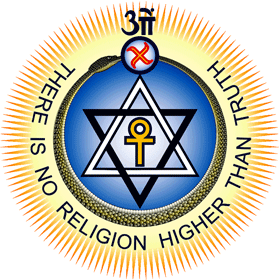March 2018 Newsletter
The following articles are reproduced from the March 2018 Newsletter to members. Non-members may or may not be able to relate to the contents.
2018 Study Class on Viveka-Chūdāmani
We are pleased to inform members that the President has selected the book Viveka-Chūdāmani or Crest-Jewel of Wisdom of Śrī Śankarāchārya for the 2018 Study Class. This would be the first time we are conducting a study class on this book.
Viveka-Chūdāmani is an important original work of Śrī Śankarāchārya, one of the greatest sages of Ancient India, on Vedanta (Occult Science) running to 581 Slokas (verses) in Sanskrit. Endowed with lofty and sharp intellect, he wrote many incisive commentaries on great standard works of Hindu philosophy. But they are beyond the reach of those who have not attained a high proficiency in Sanskrit and other collateral philosophical disciplines. Here in Viveka-Chūdāmani he distils the quintessence of what he taught, that is, the non-dual Vedanta or Advaita Vedānta in easy Sanskrit verses whose sublimity of content is matched only by their lyrical beauty. Each verse is presented with a free-running English translation. Viveka-Chūdāmani was translated for The Theosophist (Vols. VII, 1885-86 and Vol. IX, 1887-88) by Mohini M. Chatterji, one of the early members of the Theosophical Society, as “Crest-Jewel of Wisdom”.
1 – 49 October 1885, pg. 65-68
50 -105 January 1886, pg. 253-258
106 – 150 March 1886, pg. 385-390
151 – 190 July 1886, pg. 661-665
191 – 299 August 1886, 724-732
301 – 450 October 1887, pg. 23-35
452 – 512 November 1887, pg. 124-128
513 - 583 December 1887, pg. 158-162
This is the first known translation of Viveka-Chūdāmani into English. It was later published (in 1932) as a book of the same title.
Of Śrī Śankarāchārya, the greatest Vedāntic teacher of India, H.P.B. writes in the Secret Doctrine (Vol. I, p. 271):
Śrī Śankarāchārya, the greatest Initiate living in the historical ages, wrote many a Bhāshya on the Upanishads. But his original treatises, as there are reasons to suppose, have not yet fallen into the hands of the Philistines, for they are too jealously preserved in his maths (monasteries, mathams). And there are still weightier reasons to believe that the priceless Bhāshyas (Commentaries) on the esoteric doctrine of the Brahmins, by their greatest expounder, will remain for ages yet a dead letter to most of the Hindus, except the Smārtava Brahmins. This sect, founded by Śankarāchārya, (which is still very powerful in Southern India) is now almost the only one to produce students who have preserved sufficient knowledge to comprehend the dead letter of the Bhāshyas. The reason of this is that they alone, I am informed, have occasionally real Initiates at their head in their mathams, as for instance, in the “Sringa-giri,” in the Western Ghauts of Mysore.
On the other hand, there is no sect in that desperately exclusive caste of the Brahmins, more exclusive than is the Smārtava; and the reticence of its followers to say what they may know of the Occult sciences and the esoteric doctrine, is only equalled by their pride and learnings.
Śrī Śankarāchārya was an exponent and commentator of the three basic presentations of Vedanta viz. Brahma-sutras, Upanishads and Bhagavad-Gita; and one who revived Sanātana Dharma (Ancient Wisdom-Religion). He is revered in the Hindu tradition as a descendant of Sanātana, the third associate of Sanat-Kumāra who arrived on the Earth globe from that of Venus taking upon himself a sacred vow to remain here till the last of the human-souls is redeemed or liberated. Thus, the Occult Science came to be known as Sanātana-Vidya of Aryavarta. He was the disciple of Govinda Yati, a name according to immemorial custom, assumed by Patanjali at the time of his Initiation into the Monastic Order.
Few realize how lofty a Being is being alluded to here. The occult tradition talks of him as the incarnation of one of the four Kumāras—Sanat Kumāra, Sananda, Sanaka, and Sanātana. These august Beings have been called the “Lords of the Flame” and the “Children of the Fire-mist”, and They have produced a wonderful effect upon our evolution. They are also referred to as the King and His three pupils. The King, of course, refers to the current Lord of World, Sanat Kumāra. We are told that there are three Lords of the World in a World Period and that our current Lord of the World is the third for this World Period and His three pupils will be the Lords of the World for the next World Period, i.e. the next globe.
According to Tibetan and Indian Initiates, Śrī Śankarāchārya was born in 510 B.C. 51 years and 2 months after the Lord Buddha’s entrance into Nirvana, in a south Indian state now known as Kerala. After his work was accomplished, Śrī Śankarāchārya retired to a cave in the Himâlayas, permitting none of his disciples to follow him, and disappeared therein forever from the sight of the profane. To know more about Śrī Śankarāchārya and his interrelation with the Lord Buddha, you may wish to read The Mystery of Buddha (H. P. Blavatsky Collected Writings, Volume XIV, pp. 388-399).
Śrī Śankarāchārya details Discrimination and Dispassion (Viveka and Vairagya ) as the two wings of a Human-soul-bird. Viveka, meaning Discrimination, is the first step on the Path leading to Wisdom; the first step is also the last step. The import of the Teaching can be epitomized thus: Human being has 3 distinct stages in the course of Spiritual Journey, viz. Individualization, Growing into Aspiration to Divinity and Attaining the Association of The Great Ones. It provides an opportunity to an aspirant in treading the Path of Holiness; in carefully understanding the nature of the Individual Soul, Supreme or Universal Soul and the Proper Preparation needed for Ultimate Realization.
A comprehensive understanding of the Text becomes possible, to an aspirant in the modern age, by enriching him/herself with the theosophical philosophy. This philosophy asserts that practices of Viveka and Vairagya lead one to the Path Proper, forming a bridge between Humanity and Divinity
The importance of this work of Śrī Śankarāchārya to theosophists is that it identifies the qualities the aspirant needs to acquire to embark on the Path of Holiness. In addition to a discussion of these qualities, of the need for the aspirant to have a qualified teacher, and of the necessity for daily meditation, Viveka-Chūdāmani outlines the basic metaphysical doctrine of Advaita Vedānta.’
The Study Class will probably commence end April 2018 and is strictly for members only. Members will soon receive an invitation to attend the Study Class and the facility to order the textbook, Viveka-Chūdāmani.
Visit of the President of the Indo-Pacific Federation of the TS

The President of the Indo-Pacific Federation of the TS, Gerard Brennan, is visiting us and giving a talk on Living Theosophy.
This talk will examine the importance of living the theosophical and spiritual life, with an emphasis on making Theosophy a living power in our lives. It will suggest the qualifications we need to prepare ourselves to truly live the spiritual life and outline ways we may incorporate theosophical ideas and principles in our lives, so that Theosophy may genuinely live in our hearts.
Come on Saturday, 3 March 2018, at 5 p.m. to meet Gerard and listen to his talk on this useful subject.
The Christian Creed
In the words of C. W. Leadbeater, “There are many students of Theosophy who have been, and indeed still are, earnest Christians; and though their faith has gradually broadened out into unorthodoxy, they have retained a strong affection for the forms and ceremonials of the religion into which they were born. It is a pleasure to them to hear the recitation of the ancient prayers and creeds, the time-honoured psalms and canticles, though they try to read into them a higher and wider meaning than the ordinary orthodox interpretation.”
The Christian Church at present uses three formulations of belief, called respectively the Apostles’ Creed, the Nicene Creed, and the Athanasian Creed. We shall examine these creeds based on theosophical knowledge and try to understand the esoteric meaning of the Christian Creed, its origin, signification and correspondence with other traditions.
This programme, based on the book of the same name by C. W. Leadbeater, is a theosophical programme intended for both Christians and non-Christians alike. This talk by Chong Sanne, last given in April 2010, also discusses the creation of the Solar System and evolution in nature as a prelude to understanding the Christian Creed.
Don’t miss this talk on Easter Saturday, 31 March 2018 at 4 p.m.
Easter & Easter-Eggs
Easter. The word evidently comes from Ostara, the Scandinavian goddess of spring. She was the symbol of the resurrection of all nature and was worshipped in early spring. It was a custom with the pagan Norsemen at that time to exchange coloured eggs called the eggs of Ostara. These have now become Easter-Eggs. As expressed in Asgard and the Gods: “Christianity put another meaning on the old custom, by connecting it with the feast of the Resurrection of the Saviour, who, like the hidden life in the egg, slept in the grave for three days before he awakened to new life”. This was the more natural since Christ was identified with that same Spring Sun which awakens in all his glory, after the dreary and long death of winter.
H.
P. Blavatsky
Theosophical Glossary
